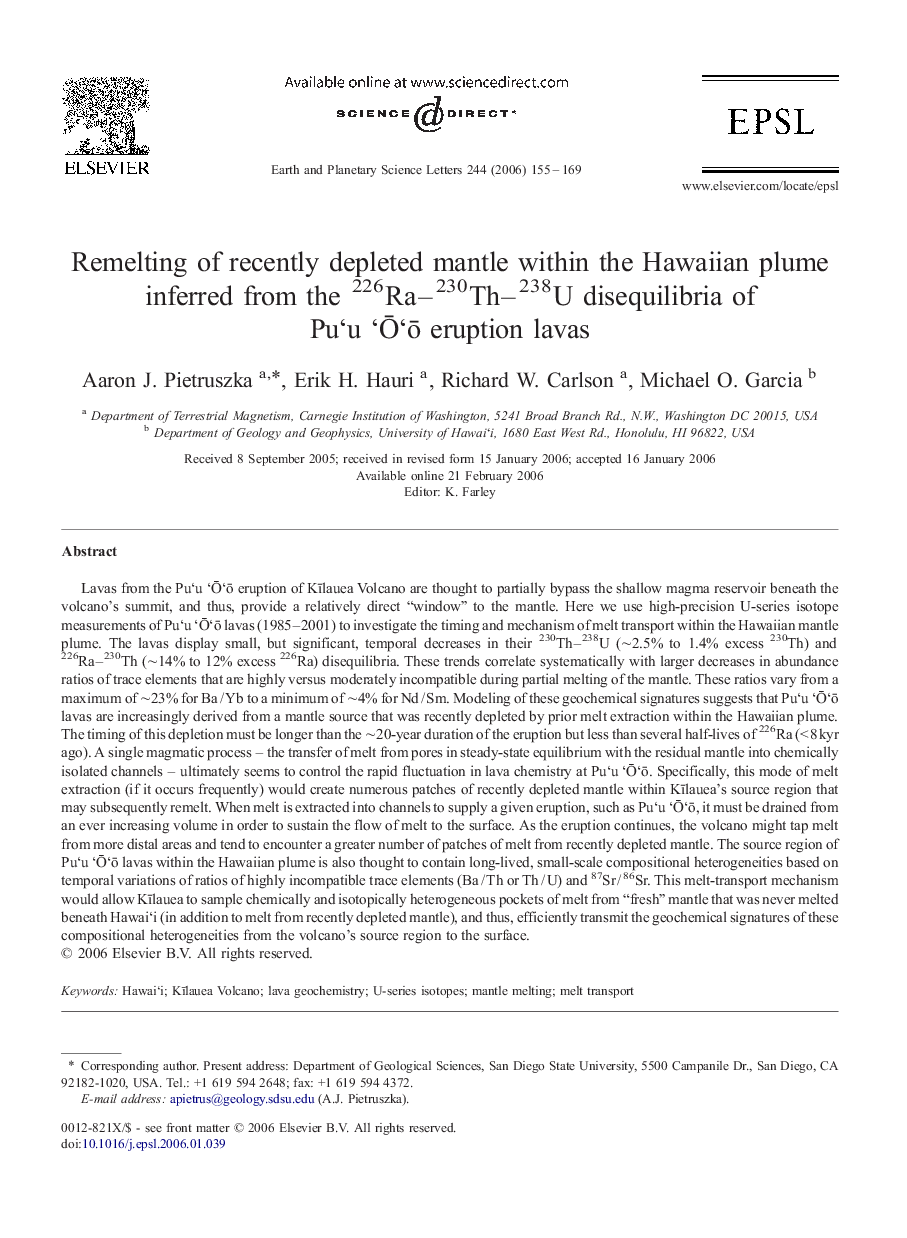| Article ID | Journal | Published Year | Pages | File Type |
|---|---|---|---|---|
| 4681061 | Earth and Planetary Science Letters | 2006 | 15 Pages |
Lavas from the Puʻu ʻŌʻō eruption of Kīlauea Volcano are thought to partially bypass the shallow magma reservoir beneath the volcano's summit, and thus, provide a relatively direct “window” to the mantle. Here we use high-precision U-series isotope measurements of Puʻu ʻŌʻō lavas (1985–2001) to investigate the timing and mechanism of melt transport within the Hawaiian mantle plume. The lavas display small, but significant, temporal decreases in their 230Th–238U (∼2.5% to 1.4% excess 230Th) and 226Ra–230Th (∼14% to 12% excess 226Ra) disequilibria. These trends correlate systematically with larger decreases in abundance ratios of trace elements that are highly versus moderately incompatible during partial melting of the mantle. These ratios vary from a maximum of ∼23% for Ba / Yb to a minimum of ∼4% for Nd / Sm. Modeling of these geochemical signatures suggests that Puʻu ʻŌʻō lavas are increasingly derived from a mantle source that was recently depleted by prior melt extraction within the Hawaiian plume. The timing of this depletion must be longer than the ∼20-year duration of the eruption but less than several half-lives of 226Ra (< 8 kyr ago). A single magmatic process – the transfer of melt from pores in steady-state equilibrium with the residual mantle into chemically isolated channels – ultimately seems to control the rapid fluctuation in lava chemistry at Puʻu ʻŌʻō. Specifically, this mode of melt extraction (if it occurs frequently) would create numerous patches of recently depleted mantle within Kīlauea's source region that may subsequently remelt. When melt is extracted into channels to supply a given eruption, such as Puʻu ʻŌʻō, it must be drained from an ever increasing volume in order to sustain the flow of melt to the surface. As the eruption continues, the volcano might tap melt from more distal areas and tend to encounter a greater number of patches of melt from recently depleted mantle. The source region of Puʻu ʻŌʻō lavas within the Hawaiian plume is also thought to contain long-lived, small-scale compositional heterogeneities based on temporal variations of ratios of highly incompatible trace elements (Ba / Th or Th / U) and 87Sr / 86Sr. This melt-transport mechanism would allow Kīlauea to sample chemically and isotopically heterogeneous pockets of melt from “fresh” mantle that was never melted beneath Hawaiʻi (in addition to melt from recently depleted mantle), and thus, efficiently transmit the geochemical signatures of these compositional heterogeneities from the volcano's source region to the surface.
